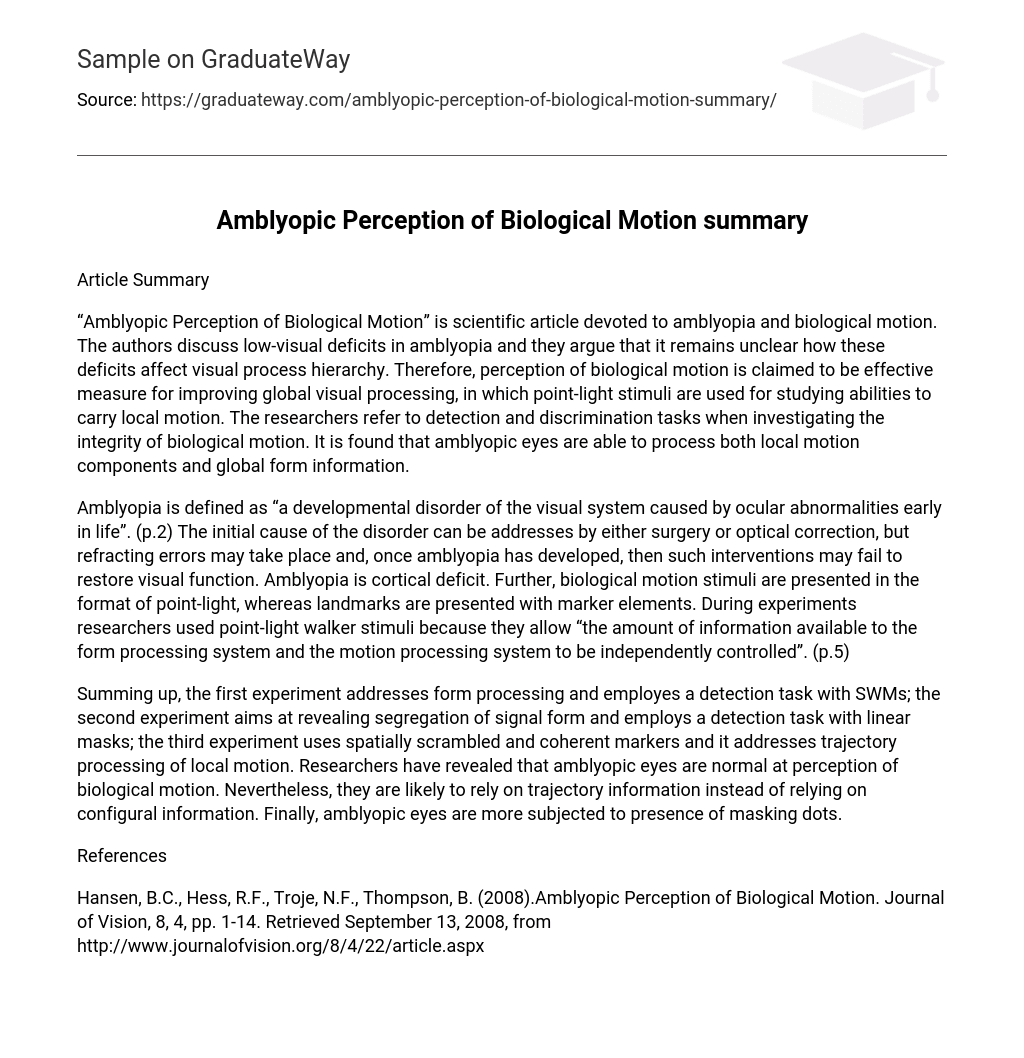Article Summary
“Amblyopic Perception of Biological Motion” is scientific article devoted to amblyopia and biological motion. The authors discuss low-visual deficits in amblyopia and they argue that it remains unclear how these deficits affect visual process hierarchy. Therefore, perception of biological motion is claimed to be effective measure for improving global visual processing, in which point-light stimuli are used for studying abilities to carry local motion. The researchers refer to detection and discrimination tasks when investigating the integrity of biological motion. It is found that amblyopic eyes are able to process both local motion components and global form information.
Amblyopia is defined as “a developmental disorder of the visual system caused by ocular abnormalities early in life”. (p.2) The initial cause of the disorder can be addresses by either surgery or optical correction, but refracting errors may take place and, once amblyopia has developed, then such interventions may fail to restore visual function. Amblyopia is cortical deficit. Further, biological motion stimuli are presented in the format of point-light, whereas landmarks are presented with marker elements. During experiments researchers used point-light walker stimuli because they allow “the amount of information available to the form processing system and the motion processing system to be independently controlled”. (p.5)
Summing up, the first experiment addresses form processing and employes a detection task with SWMs; the second experiment aims at revealing segregation of signal form and employs a detection task with linear masks; the third experiment uses spatially scrambled and coherent markers and it addresses trajectory processing of local motion. Researchers have revealed that amblyopic eyes are normal at perception of biological motion. Nevertheless, they are likely to rely on trajectory information instead of relying on configural information. Finally, amblyopic eyes are more subjected to presence of masking dots.
References
Hansen, B.C., Hess, R.F., Troje, N.F., Thompson, B. (2008).Amblyopic Perception of Biological Motion. Journal of Vision, 8, 4, pp. 1-14. Retrieved September 13, 2008, from http://www.journalofvision.org/8/4/22/article.aspx





